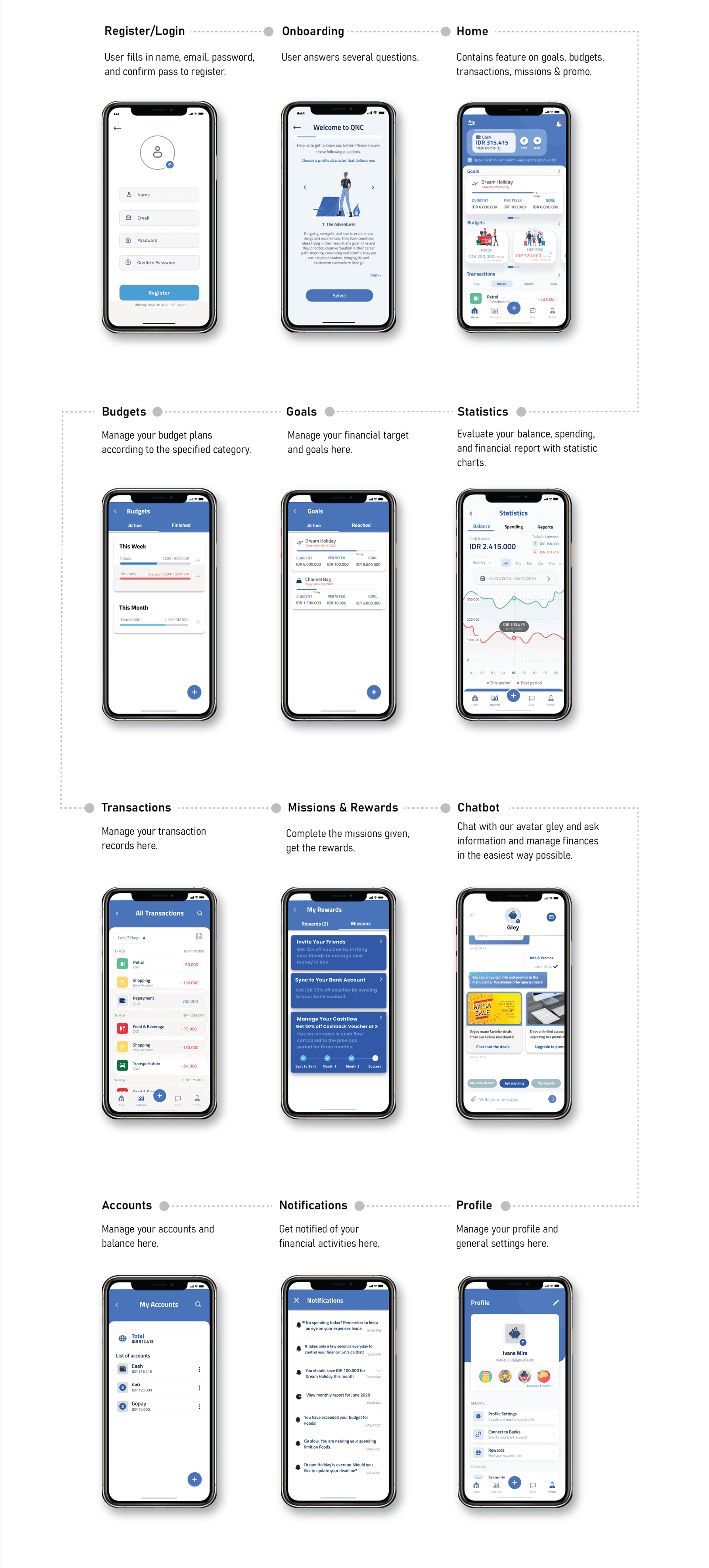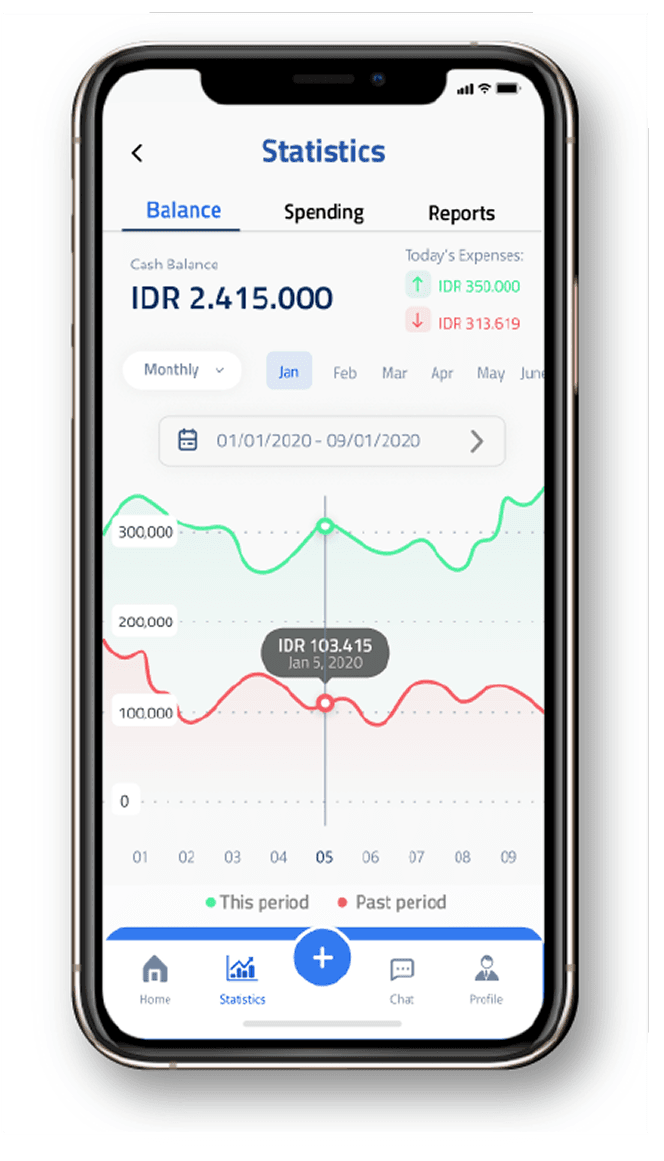📌 About Project
QNC is a financial management app designed with a persuasive design approach to increase the financial literacy rate of millennials. This app aims to target users in managing their finances routinely. QNC provides assistance in carrying out saving activities in accordance with the target and goals to be achieved. It also serves as a reminder in controlling user consumptive behavior such as by arranging a scale priority in spending.
2020 Graduate Thesis
My Role
💻 Workflow UI Design
In the design process, the submitted product requirements from product owner will then be translated into design ideas. After the review process, revisions are made (if any).

🚩 Defining the Scope
The level of financial literacy of Indonesian people is still very low at only 29.7%. While the generation profile in Indonesia is currently dominated by millennials at 33.75%. However, millennials still experience many difficulties in managing their financial activities. To overcome these problems, I conduct several tests to create a suitable fintech app for millennials that can be used to persuade them to manage their finances routinely.
💡 Ideations
A deep understanding of the problem was the first step. The goal is to understand the task, context, and users as deeply as possible through data gathering and analysis, outlining personas, interviews, and interpreting user needs. Benchmarking, workshops, and focus-group discussions were used to develop several alternative design concepts.
Insights focused on: (1) users’ specific financial goals with guided communication (avatar), missions & rewards to boost motivation; and (2) reduction principles to simplify information and help complete tasks easily.

🎨 High Fidelity Design
I moved straight to hi-fi wireframes due to time constraints, using Figma to quickly design, build, and export assets for prototyping.



Application User Flow and Feature List

🚩 Usability Testing
Prototype evaluation used task scenarios and System Usability Scale (SUS) to measure effectiveness, efficiency, satisfaction, and learnability.
78%
Effectiveness
82%
Efficiency
80%
Satisfaction
73%
Learnability
